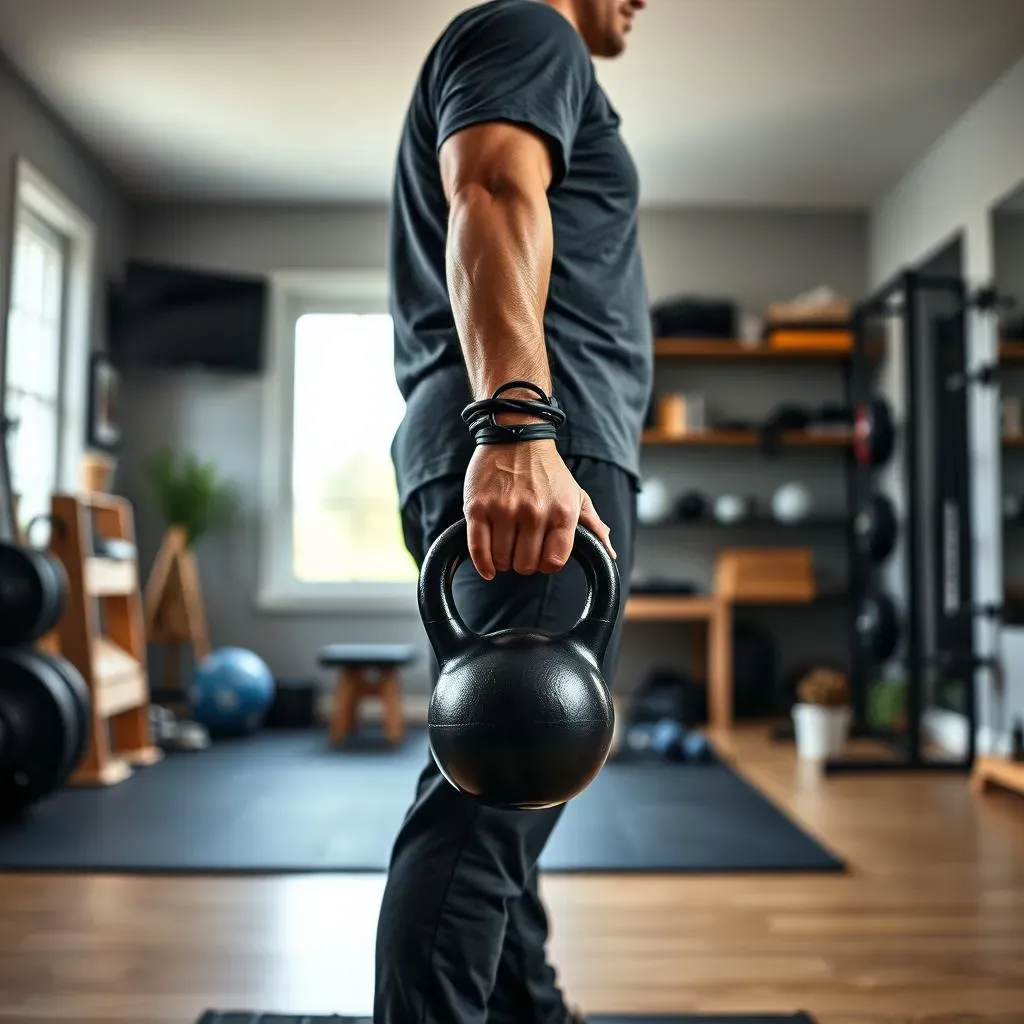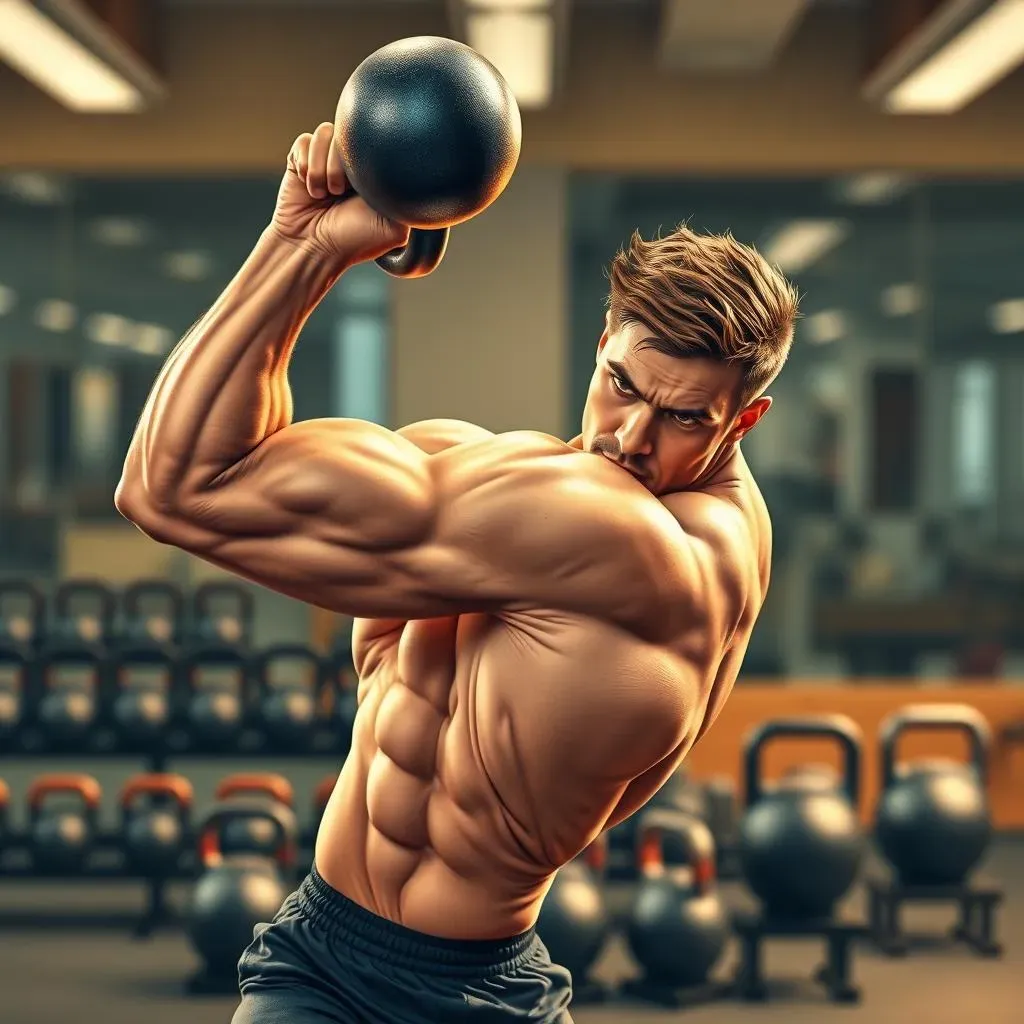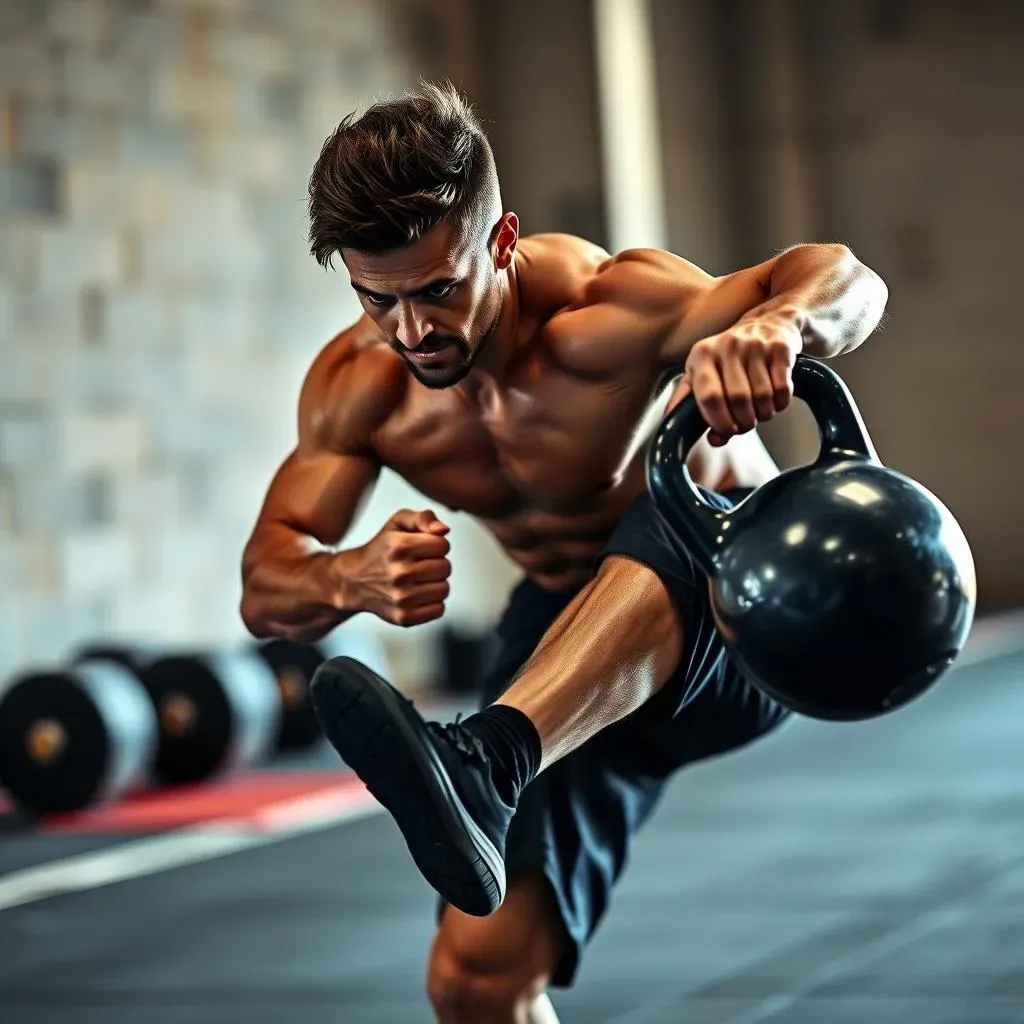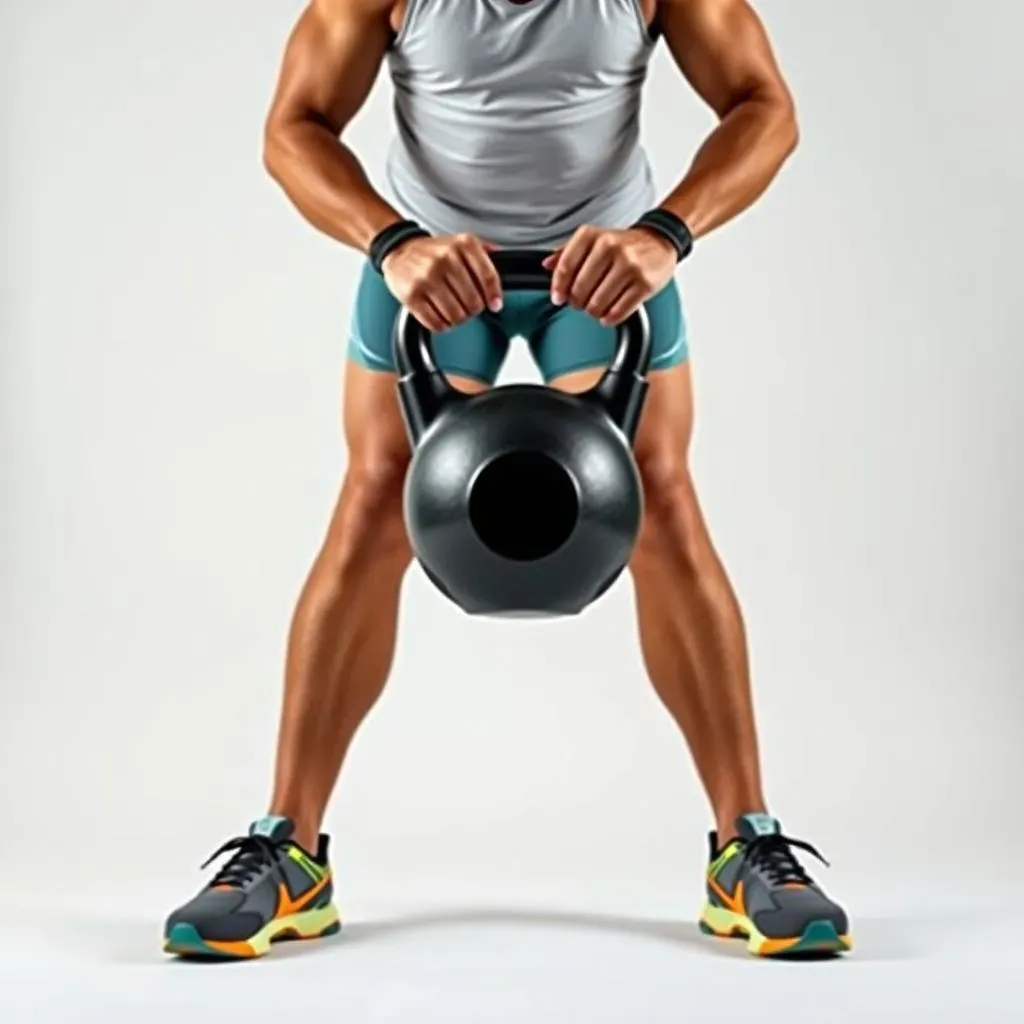Table of Contents
Ready to transform your leg day? Forget those clunky machines and endless squats with a barbell. It's time to grab a kettlebell and unlock a new level of lower body strength. This isn't just another workout; it's a journey to building powerful, functional legs. We're going to explore how a simple kettlebell can revolutionize your leg training, offering a blend of strength, cardio, and stability work that you won't find anywhere else. This article will guide you through the essentials of kettlebell training, from the basic moves to more complex techniques that will challenge you. We will cover key exercises like swings, squats, and lunges, showing you exactly how to perform them safely and effectively. You'll also learn how to create your own killer "leg workout with kettlebell" routine, tailored to your fitness level and goals. Prepare to discover the versatility and effectiveness of kettlebells, and get ready to build the legs you’ve always wanted.
Kettlebell Training Basics

Kettlebell Training Basics
Alright, so you're curious about kettlebells? Awesome! It's like discovering a secret weapon for your workouts. Forget those fancy gym machines that lock you into one movement. Kettlebells are all about freedom and functional strength. They're basically a cannonball with a handle, and that simple design is what makes them so amazing. You're not just lifting weight; you're swinging, pulling, and balancing, which means you're engaging way more muscles than you think. Think of it like this: dumbbells are like driving a car on a smooth road, while kettlebells are like off-roading – way more engaging and a lot more fun. Before you start tossing them around like a circus performer, let's talk about the basics. We're going to need to get our form down, because good technique is the key to unlocking your full potential. Trust me, once you get the hang of it, you'll be hooked.
Kettlebell Basics | Description |
|---|---|
Grip | Hold the handle firmly, but not in a death grip. A relaxed grip helps with fluidity. |
Stance | Feet should be shoulder-width apart, with a slight bend in your knees. |
Posture | Maintain a straight back and engage your core. Think about standing tall. |
Kettlebell Exercises for Lower Body Strength

Kettlebell Exercises for Lower Body Strength
The Mighty Swing
Let's kick things off with the kettlebell swing, the king of all kettlebell exercises. It's not just about lifting the weight; it’s about generating power from your hips, like you're trying to launch a rocket. Picture a hinge, not a squat. You're bending at your hips, letting the kettlebell swing between your legs and then explosively driving your hips forward to send it flying. It's a full-body workout disguised as a simple movement, working your glutes, hamstrings, and core like a well-oiled machine. Seriously, if you could only do one kettlebell exercise for your legs, this would be it. It's that good.
Many people make the mistake of using their arms to lift the kettlebell, which is a recipe for back pain. Remember the power comes from your hips and your glutes, not your arms. Keep your core engaged, your back straight, and let those hips do the talking. Once you’ve got the basic swing down, you can start playing around with variations like the Russian swing (stopping at chest height) or the American swing (going overhead), but let’s master the basics first.
Squat Variations
Next up, let’s talk about squats, but with a kettlebell twist. The goblet squat is a fantastic place to start, holding the kettlebell close to your chest like you’re cradling a baby. This variation helps you keep your chest up and your core engaged, which is crucial for a good squat. It’s like the kettlebell is giving you a little hug, reminding you to keep your back straight. Drop down until your thighs are parallel to the ground, or as far as is comfortable for you, and then push back up through your heels.
Once you’ve mastered the goblet squat, you can start playing with other variations like front squats or even pistol squats. Pistol squats are an advanced move, so don’t worry about those just yet, but it’s good to have goals. The main thing is to keep your form tight, control the movement, and feel those leg muscles working. You're not just going down and up, you're sculpting your legs with each rep. It’s like chiseling away at a block of marble to reveal a masterpiece – and that masterpiece is your powerful lower body.
Exercise | Muscles Targeted | Tips |
|---|---|---|
Kettlebell Swing | Glutes, hamstrings, core | Hinge at the hips, not the waist. Drive with your hips. |
Goblet Squat | Quads, glutes, core | Hold the kettlebell close to your chest. Keep your back straight. |
Kettlebell Lunges | Quads, glutes, hamstrings | Step back with control. Keep your front knee behind your toes. |
Lunging into Strength
Finally, let's talk lunges. They might seem simple, but they're a powerhouse for building lower body strength and stability. You can do forward lunges, reverse lunges, or even walking lunges, and each one will challenge your legs in a slightly different way. You can hold the kettlebell by your side, in a rack position, or even overhead for an extra challenge. No matter how you do them, make sure you’re keeping your front knee behind your toes and that your back knee is hovering just above the ground.
Lunges are not just about building strength; they're also fantastic for improving balance and coordination. They force you to stabilize your body as you move, which is key for functional fitness. Plus, they're a great way to work each leg individually, which can help correct any muscular imbalances. It’s like each leg is getting its own personal training session, making sure they’re both pulling their weight. And if you want to turn it up a notch, try adding a twist or a jump. Just be sure to master the basic lunge first before you go all fancy.
Advanced Kettlebell Leg Workout Techniques

Advanced Kettlebell Leg Workout Techniques
Unilateral Training
Okay, so you've mastered the basics? Fantastic! Now, let's crank things up a notch with unilateral training. What's that? It's just a fancy way of saying "working one leg at a time." Think about it: most of our daily movements involve one leg doing a bit more work than the other. Walking, climbing stairs, even just standing – it's rarely perfectly balanced. So, why not train like that? Exercises like single-leg deadlifts, pistol squats (if you're feeling brave), and single-leg step-ups will not only build strength but also improve your balance and coordination. It's like giving each leg its own mini-challenge, forcing them to work harder and smarter. And you know what? It's gonna make you feel like a superhero when you nail it.
Don't be surprised if one leg is stronger than the other when you first start. That's totally normal, and unilateral training is a fantastic way to address those imbalances. It's like having a built-in system to correct your wobbly bits. Start slow, focus on your form, and gradually increase the difficulty as you get stronger. Trust me, the effort is worth it. You'll be amazed at how quickly your balance and stability improve. It's like unlocking a secret level in your fitness journey.
Advanced Technique | Description | Benefits |
|---|---|---|
Unilateral Training | Working one leg at a time. | Improves balance, coordination, and addresses muscular imbalances. |
Plyometrics | Explosive movements like jumps and hops. | Develops power, speed, and overall athleticism. |
Complexes | Stringing multiple exercises together. | Increases workout intensity and cardiovascular fitness. |
Explosive Power with Plyometrics
Alright, let's talk about jumping! Plyometrics are all about explosive power, turning your legs into springs. Think of box jumps, jump squats, and even just hopping lunges. These moves are not just about getting your heart rate up; they're about teaching your muscles to generate force quickly. It’s like turning on the afterburners in your leg muscles. They're also a fantastic way to improve your athleticism. When you're doing plyometric exercises with kettlebells, it adds a whole new dimension to the challenge. It's like giving your muscles a surprise party and they're all invited to the gains.
But, hold your horses, you can't just jump into plyometrics without a solid base. You need to be comfortable with the basic movements first, and your joints must be ready for the impact. Start with low-impact variations and gradually increase the intensity as you get stronger and more confident. It's not a race; it's a journey. Remember, good form is key to preventing injuries. It's like building a house; you need a solid foundation before you start adding extra floors. So, take your time, listen to your body, and get ready to jump your way to a more powerful lower body.
Kettlebell Complexes
Finally, let's talk about kettlebell complexes. What's a complex? It's simply stringing together a series of exercises, one after the other, without putting the kettlebell down. Think about going from a swing to a squat, then to a lunge, and then back to a swing, all in one smooth, continuous flow. It's like a dance, but instead of music, you’ve got the clanging of kettlebells. These complexes will not only build strength and power, they'll also test your endurance and coordination. It's like combining a strength workout with a cardio session, all in one go.
The beauty of complexes is that you can mix and match exercises to suit your goals and abilities. Start with just a few moves and gradually add more as you get stronger. It’s like building a Lego masterpiece; you start with a few blocks and then add more to create something amazing. And don't be surprised if you feel completely exhausted afterward. Kettlebell complexes are a fantastic way to push your limits and see what you're truly capable of. It's like discovering a hidden gear in your fitness engine. So, get creative, get moving, and get ready to sweat!
Creating Your Own Kettlebell Leg Workout Plan

Creating Your Own Kettlebell Leg Workout Plan
Setting Your Goals
Okay, so you're ready to create your own kettlebell leg workout plan? Awesome! First things first, let's figure out what you're actually trying to achieve. Are you aiming for raw strength, looking to build some serious muscle, or perhaps focusing on endurance and functional fitness? Maybe you want to be able to climb a mountain with ease, or just feel like a superhero when you walk up the stairs? Your goals will dictate the types of exercises you choose, the number of sets and reps you do, and how often you train. It's like having a roadmap for your fitness journey, without a destination, you're just wandering aimlessly. So take a moment, think about what you truly want, and let's get started. It's all about making this workout work for you, not the other way around.
Choosing the Right Exercises
Now that we have a goal, let's pick the right tools for the job. Think about the exercises that we've discussed, the swings, squats, lunges, and all those fancy variations. Which ones excite you? Which ones challenge you? A good workout plan should include a mix of compound movements, which work multiple muscle groups at once, and isolation exercises, which target specific muscles. It's like creating a well-balanced meal; you need protein, carbs, and all those good vitamins to keep your body happy. Try to pick at least one exercise from each category (swing, squat, lunge, unilateral) and then let's put them all together. Also, don't be afraid to experiment with different variations to keep things interesting. It's your workout, so make it your own.
Goal | Exercise Focus | Example Exercises |
|---|---|---|
Strength | Heavy lifts, lower reps | Goblet Squats, Single-Leg Deadlifts, Heavy Swings |
Muscle Building | Moderate weight, moderate reps | Front Squats, Kettlebell Lunges, Bulgarian Split Squats |
Endurance | Lighter weight, high reps | Kettlebell Swings, Walking Lunges, Step-Ups |
Putting It All Together
Alright, you've got your exercises, you've got your goals, now let’s put it all together. Start with a warm-up, maybe some light cardio and dynamic stretching to get your muscles ready for work. Then, move on to your main workout, performing each exercise with good form and control. Don't rush through the reps; focus on the quality of each movement. It's like savoring a good meal; you wouldn't just gulp it down, right? After your workout, cool down with some static stretches to help your muscles recover. It's like giving your body a nice hug after all that hard work. And don't forget to listen to your body; if you're feeling pain, stop and rest. It's better to take a break than to push yourself too hard and get injured. A good workout should leave you feeling energized and accomplished, not broken and defeated.
And remember, consistency is key. It's better to do a little bit regularly than to go all-out once and then burn out. Start with a workout plan that you can stick to, and gradually increase the intensity and frequency as you get stronger. It’s like building a habit, you start small and then build it up over time. Finally, don't be afraid to adjust your plan as you go. Your body will change, your goals may evolve, and your workout plan should reflect that. It’s your journey; make it a fun, challenging, and rewarding one.